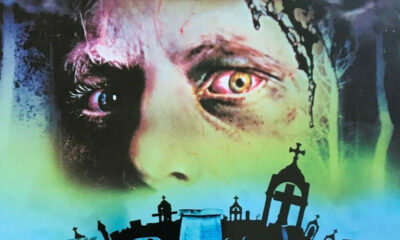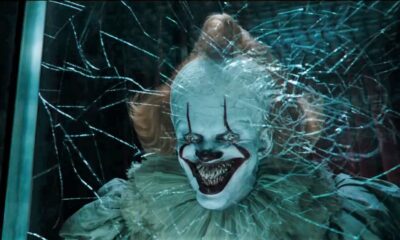Reviews
Glorious (2022) Review: Cosmic Horror in the Gents
A review of Glorious, a 2022 horror film directed by Rebekah McKendry and starring Ryan Kwanten and J. K. Simmons.
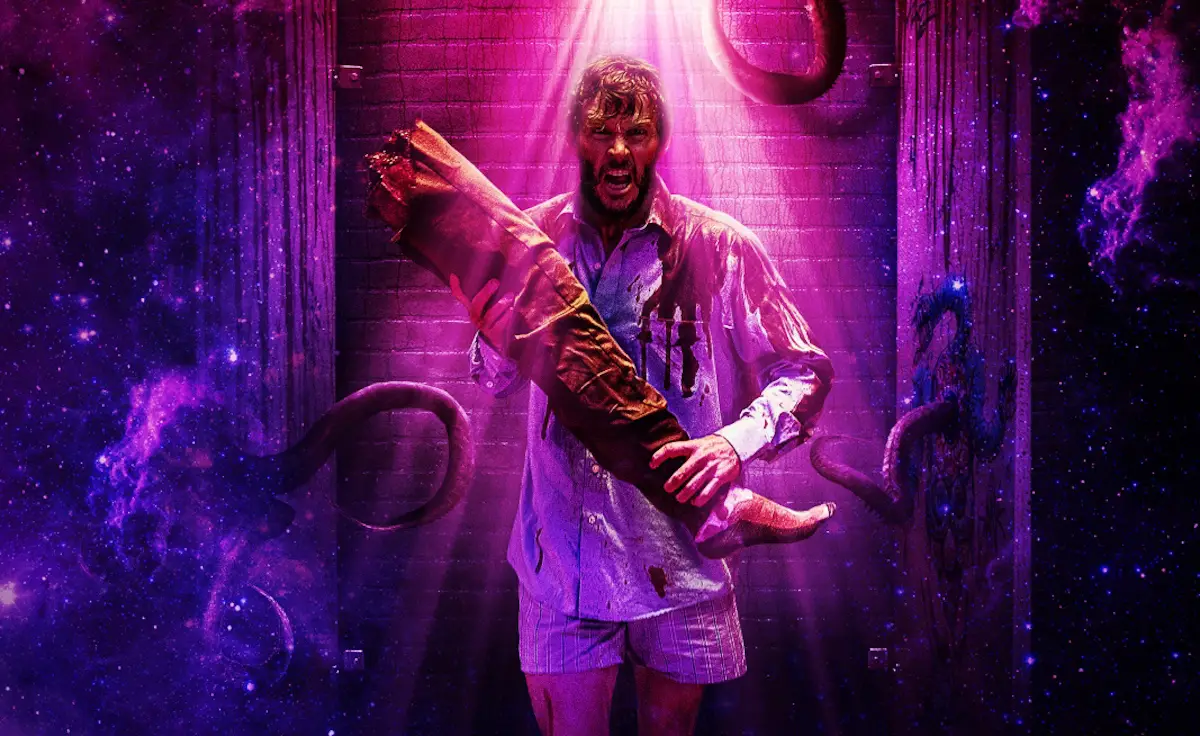
When you purchase through links on our site, we may earn an affiliate commission.
Glorious is a 2022 American horror film directed by Rebekah McKendry and starring Ryan Kwanten and J. K. Simmons.
Despairing Wes (Ryan Kwanten ) finds himself at a remote rest stop, where he gets blackout drunk. Grieving the breakup with his ex Brenda (Sylvia Grace Crim), down and out Wes appears to be living out of his car. Dirty, dishevelled, and disorganised, he is clearly a man living on the edge. There is something off about this guy right from the start. The following morning, after discovering the remains of his burned trousers, he ends up trapped in the restroom. Trouserless and hungover, Wes soon learns that he is not alone in there and with something more terrifying than he could ever imagine. As it turns out, fate has brought him to his current situation, and he soon learns of his destiny, in a toilet.
Glorious wastes no time in getting mucky. Germaphobes be warned: the unsanitary tiled conditions of the main setting aren’t for the squeamish. As we move forward, things get bloodier, gooier, ickier and altogether quite revolting. With humorous references to muck, director McKendry is careful not to overstep the mark visually, leaving things to the viewer’s imagination. This helps to not distract from the real mystery at play here.
As we learn more about the two main players, it slowly becomes clear why their paths have crossed. The clues are there, within Wes’ flashbacks, but not spelled out, allowing the viewer room to figure it out for themselves. McKendry does well to keep the viewer intrigued without giving too much away until the right moment. The flashback scenes keep the intensity up as the viewer never quite knows if something ominous is about to happen. The final reveal ties everything together superbly, and provides a satisfying climax to this claustrophobic Lovecraftian horror.
One of the film’s strong points is the acting. Ryan Kwanten gives a solid performance as the distraught drifter Wes stuck between a rock and a hard place. Typically on form is J.K. Simmons whose unique voice is instantly recognisable. Simmons, no stranger to voice acting, does well to inject some personality to his mostly disembodied voice. The dynamic between the two characters works well as they play off each other, driving the plot forward.
The lighting and colour is used effectively during the restroom scenes, with splashes of intense colour against a muted background to help set the mood and focus the viewer’s eye. The choice of purple for a key light helps convey the feeling of something otherworldly, and cosmic as it illuminates the darkened restroom. Sound is used to heighten the tension, reminding both Wes and the viewer, the gravity of the situation. The film includes elements of dark comedy, with, unsurprisingly, some toilet humour and a glory hole, but the existential horror still dominates the overall tone.
Perhaps where Glorious falls short is the running time, but it is nevertheless remarkable what the film achieves in just under 80 minutes. Despite the absurd premise, and gross out themes, the film is both a thought-provoking and engaging tale. Conceptually, the film feels fresh, intriguing, and delivers on its promise of cosmic horror while not taking itself too seriously. Staunch Lovecraftian fans will surely not be disappointed. A definite worthwhile watch.
Glorious is available now on Shudder. UK viewers can sign up to Shudder via Amazon here.
3.5/5
Reviews
Evil Dead Rise (2023) Review: A Darker Entry to the Franchise
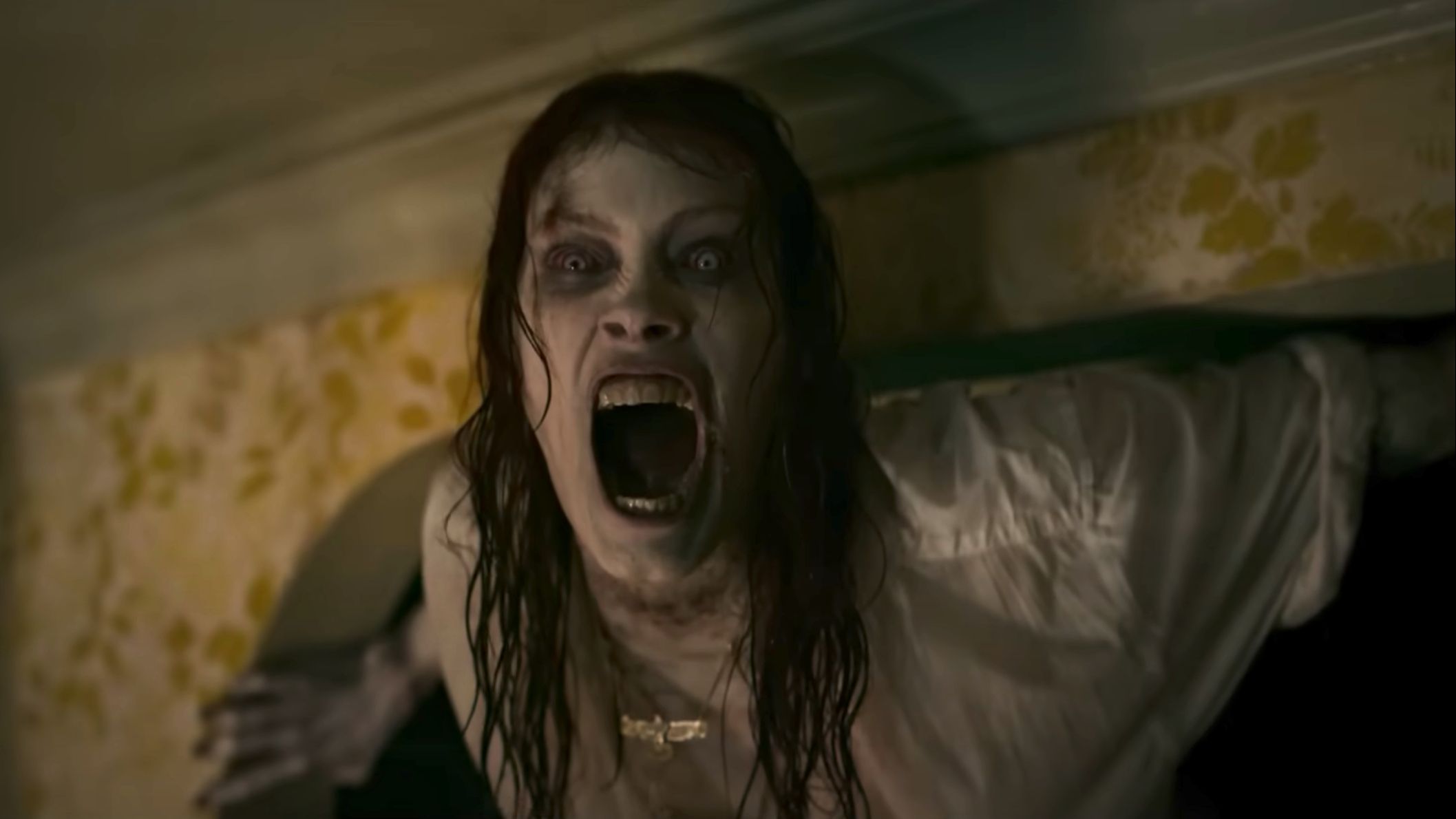
When you purchase through links on our site, we may earn an affiliate commission.
A review of Evil Dead Rise, the latest instalment to the hit horror franchise that started in 1981.
The opening scene of Evil Dead Rise is so well done that it is probably one of the best title cards in a film to date. The initial deadite is utterly terrifying, and it’s clear from the off that director Lee Cronin is not pulling any punches when it comes to blood, guts and gore. Furthermore, not even the kids are safe in this movie.
The tone of Evil Dead Rise is definitely closer to the 2013 ‘reboot’ Evil Dead, being of a more serious nature, with perhaps a teeny tiny bit less gore, which is really something if one considers what happens in this film. It’s interesting that with the absence of Bruce Campbell on screen, much like its 2013 predecessor (excluding the post-credits scene), the film can breathe and explore a darker more serious tone; which in a way is what audiences are used to these days with shows such as The Last of Us, Black Summer and The Walking Dead franchise. The reception to the 2013 Evil Dead ‘reboot’ showed that people like their demons serious, and that is exactly what they’re getting with this film. Once things get moving, it’s a rip-roaring, terrifying blood soaked ride to the credits.
The choice of setting was a wise one, and helps give the franchise a fresh feel. Despite the change of scenery, from cabin to city apartment, Cronin did as promised, maintaining a high level of claustrophobia. The close shots and camera angles help convey this sense of claustrophobia and looming dread.
As the trailer shows, the Evil Dead flagship weapons, the trusty chainsaw and shotgun make an appearance. It’s much needed, since the conventional way of dispatching the undead in films, usually by destroying the brain, doesn’t work here, which is what makes the deadites so utterly terrifying.
The film definitely has atmosphere, and the scenes where the records are playing are a nice nod to the original films, giving that familiar sense of dread as the evil races towards the apartment block. There are some real edge-of-your-seat moments in the film, and the sound design and gorgeous lighting are what helps create this tension.
Once the momentum gets underway there’s little room for pause, which is what you would expect from an Evil Dead film, especially one that is only 90 minutes long. The series allowed for more character development, but only because it had more time. The deadites wait for no one, and it’s only a matter of time before the cunning, deadly demons get their way.
The original films didn’t really give much background to the characters; Ash’s of course developing over the course of the sequels and series. However, this film gives just enough background for the audience to care about and perhaps even relate to the family before it all kicks off.
Both the leads were excellent in their roles, especially Alyssa Sutherland, who makes a frightfully terrifying deadite. Sutherland’s stature and looks easily help create one of the most memorable, and intimidating deadites since the first film. Most of the other deadites are underused, but Sutherland is enough to keep the protagonists busy, and audience suitably terrified. Lily Sullivan is a likeable, convincing protagonist and once that chainsaw fires up, she shows those nasty deadites she means business.
While it’s fresh for the franchise, it’s not the first film of its type to feature demonic possession in an apartment block; Demons 2 did this way back in 1986, and it was done pretty well; making use of the whole block, while maintaining a highly claustrophobic feeling and tense atmosphere. Furthermore, REC (2007) also featured possessed demons, and managed to create a lot of suspense as the characters tried to make their way through the apartment block. The majority of Evil Dead Rise takes place inside the family’s apartment, and only a few other neighbours feature outside of theirs. Perhaps a missed opportunity to create a horde of deadites, but a small group or even one is usually enough to entertain.
Perhaps one of the least likeable things about the film was the way it dealt with the multiple deadites. Surely if they were so intent on getting their victims, they could have done so with much greater ease than the method they used. The deadites are of course more dangerous than your average Argento demon or Romero zombie, and extremely powerful, with supernatural abilities, so it stands to reason that trying to escape multiple deadites as they were, with a young child might pose a problem for writers. That said, in the film, the Book of the Dead makes the rules, and the film’s writer and director found a way for it all to work.
Overall, this is a solid stylish entry to the series, and there’s room for more films or even another series. Staunch fans of Campbell’s ‘splatstick’ humour may be disappointed with the darker more serious tone. However, all may be forgiven as the film’s story, pacing, effects and performances are all very well done. It feels like some much needed fresh air has been breathed into the franchise. Despite the deadites having a different look to the originals, this one still really feels like an Evil Dead film, perhaps closer to the 2013 reimagining than its predecessors, but another worthy entry nonetheless. There’s even a nod to Kubrick’s classic, The Shining (1980) in there. Evil Dead Rise is a satisfyingly gory, blood-soaked rip roaring ride to the credits.
4/5
Reviews
The Pope’s Exorcist (2023) Review: Russell Crowe’s Swashbuckling Amorth Battles his Demons

When you purchase through links on our site, we may earn an affiliate commission.
A review of the highly fictionalised horror film, The Pope’s Exorcist, starring Russell Crowe, inspired by the case files of the Vatican’s former Chief Exorcist Father Gabriel Amorth.
The Pope’s Exorcist starts off quite strongly with a tense ‘exorcism’ scene, where Crowe makes an entrance reminiscent of a protagonist from a classic Western. The way in which the ‘exorcism’ is dealt with gives the impression that we might be in for a fresh take on the genre, but sadly this isn’t the case, and once the film’s main possession gets underway things soon get ‘Friedkinesque’, minus the superior quality of ‘The Exorcist‘.
After a tragedy, an American family inherits an old abbey in Spain, aiming to renovate it and sell it on. Turns out this place has a bit of dark history and has been a thorn in the side of the Vatican for a long time. Cue possession of a family member, the local priest Father Esquibel (Daniel Zovatto) being unable to deal with it and we can already guess who is going to have to come and sort this mess out. Crowe’s boss, The Pope, played by an underused Franco Nero, asks Father Amorth to go and deal with the matter.
Things soon get wobbly as we’re treated to an oversized Russell Crowe zipping along the stunning Spanish countryside on his little motor scooter. At this point, one may wonder what would happen if he went over a pothole or even a stone on that thing. That said, it’s a nice touch, and adds some character to Crowe’s Father Amorth.
Crowe portrays Amorth as a somewhat controversial character within the Catholic Church. A scooter-riding, whiskey-quaffing, swashbuckling maverick whose faith is unwavering; unafraid to challenge those who seek to remove him from his esteemed position with his sharp wit. Complete with his oversized bag o’ tricks and whiskey bottle, which he claims helps a parched throat, Crowe’s burly heroic Amorth is clearly the right person for the job. There’s not a door in that abbey he cannot open; after booting one solid door open to help one of the family members, it’s no surprise whom Father Esquibel calls out to for help when he can’t open his own. It would be no surprise if those door barging/booting scenes were done in one take.
At times, Amorth is depicted as being almost proud of his position as the Vatican’s Chief Exorcist and his literary pursuits, something which he is aware of from the powers above, and that he must keep in check. But, it is these imperfections of character that make him so likeable and perhaps relatable, and Crowe does an excellent job of showing us.
All the usual possession film tropes are here holding up the fort, including twisty and contorted possessed wall climbers, projectile vomiting, word etchings, mind manipulation, the profanity, the bed, and of course the demonic eyes. Although we’re dealing with supernatural elements in the film, the neck twisting starts to get a tad ridiculous in one scene, and it’s a wonder the character is even alive let alone still having full use of her limbs following dispossession.
Peter DeSouza-Feighoney does an excellent job as the possessed child, and the family members play their part sufficiently. Daniel Zovatto plays Father Esquibel well, and has a satisfying arc in the film. The cinematography is stunning and effects for the most part are well done, although a bit shaky towards the end. The score consists of some faith-inspired 80s music thrown in there for authenticity (The Cult’s ‘She Sells Sanctuary’ and Faith No More’s ‘We Care A Lot’ ). There’s one scene where the fathers are battling the demons in unison and for a second it almost feels like they might just break out into a TikTok dance.
The best thing about the film by far is Russell Crowe’s performance. While some might criticise his accent or Italian, for the most part he is convincing and is careful not to push the character beyond his limits. Crowe manages to create a likeable character, which at the right times adds a bit of comic relief to the film’s generally more serious tone. That said, Crowe takes his role seriously, and plays it straight at all the right moments, especially when solemnly recounting his past sins.
Ultimately, it’s a highly fictionalised Hollywood version of Father Amorth and exorcisms. It’s a bit like when one imagines who would play themselves in a movie, and chooses someone (usually better looking with more charisma) who neither looks like them nor acts like they really did in real life. Add in some demons, explosions, a conspiracy, a Lambretta and sunglasses, some 80’s music, and you’ve got quite an entertaining film.
Perhaps where the film really falls short is the lack of palpable tension; once the momentum gets going, things move along quickly, and there’s a real lack of suspense. Bearing in the mind this is meant to be a horror/thriller film, it simply lacks the necessary tension to be truly scary for a seasoned horror fan. However, it is entertaining, there’s rarely a dull moment, and the performances make it watchable.
Naturally, a film such as this will always be compared to The Exorcist, which is a tough act to follow; unsurprisingly, it doesn’t even come close to matching it for shock, tension, horror and most importantly – atmosphere.
One could be wrong, but after a reveal it feels like there might be room for more films, or perhaps a series if Crowe is up for it. After all, Father Amorth oversaw many exorcisms, so the source material is not exactly lacking. The film was very watchable and Crowe’s Amorth is what makes it so.
The film is worth watching for Russell Crowe’s performance alone, and while it lacks the tension that films of a similar nature usually have, it is entertaining nonetheless. It’s worth seeing just for burly Crowe dressed as a priest whizzing around on his teeny tiny Lambretta to Faith No More.
3/5
Reviews
Nocebo (2022) Review: A Supernatural Tale with an Unsettling Allegory
Eva Green and Mark Strong star in Nocebo, a Filipino-Irish psychological horror thriller directed by Lorcan Finnegan.
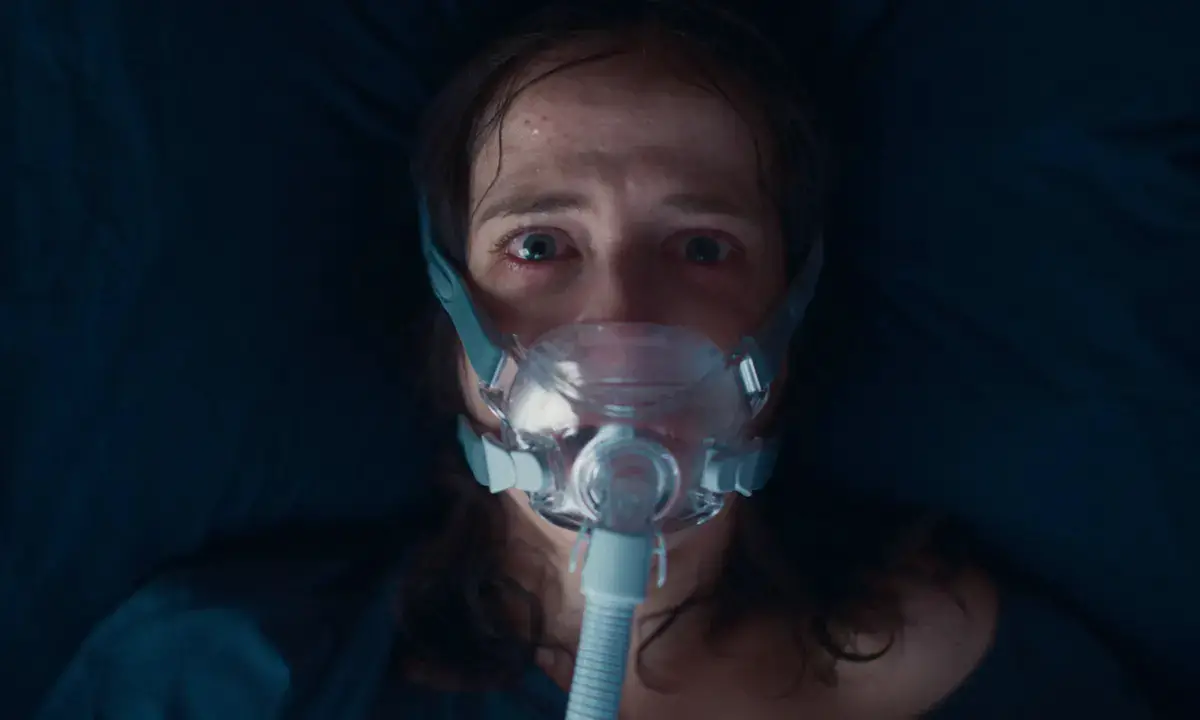
When you purchase through links on our site, we may earn an affiliate commission.
Eva Green and Mark Strong star in Nocebo, a Filipino-Irish psychological horror thriller directed by Lorcan Finnegan.
At her children’s clothing fashion show, designer Christine (Eva Green), receives a phone call that leaves her with terrible news regarding “pulling out of bodies”. Fast forward eight months, Christine appears to be suffering from an inexplicable illness, exhibiting symptoms that puzzle her doctors. She is unable to work, suffering brain fog, and reliant on medication, as well as a CPAP machine for sleeping. Christine’s illness causes frustration for her controlling husband Felix (Mark Strong), and their daughter Bobs (Billie Gadsdon), who have struggled to help her with it. However, hope arrives in the form of Diana (Chai Fonacier), a stranger who offers an unorthodox treatment for Christine’s condition, ultimately revealing a terrible truth.
Shot in both Dublin and Manila, Nocebo creates a compelling clash of two worlds. Director Lorcan Finnegan’s superb eye for composition and colour is on full display as he stylishly captures Christine’s descent into illness. From the ominous score that sets an unsettling tone from the beginning, to the clever use of colour and sound design to emphasise Christine’s debilitating symptoms, Finnegan creates an immersive experience for the viewer. The muted colour palette and lighting effectively convey Christine’s condition, while the use of a piercing, high-pitched sound when her symptoms manifest is a jarring and effective touch. The film’s eerie sounds and beating drum help to drive the underlying theme of folk horror, adding an additional layer of tension. Despite the spacious setting of Christine’s home, the camera work creates a feeling of claustrophobia, as close angles and unsettling shots convey the character’s disturbed state of mind. As Christine’s sins are revealed, the walls seem to close in on her, adding to the sense of dread and unease.
Lorcan Finnegan lays out the groundwork for a slow-burning story, carefully dropping breadcrumbs along the way to create an unsettling sense of foreshadowing. The use of motifs to foreshadow the terrible truth that lies within Christine keeps one intrigued about the horrors that are yet to be revealed. However, the film’s message sadly starts to become unsubtle when both Felix’s attitude and Christine’s work allude to a theme of imperialism. Furthermore, widway through the film, Nocebo takes a somewhat muddled and surreal turn through a series of flashbacks. However, the subtle interplay between the two leads is a testament to Finnegan’s skilful direction, drawing the viewer into the two women’s unsettling interactions.
The quality of acting is what truly holds up the film, elevating it beyond its own storytelling. Eva Green as Christine delivers a tour-de-force performance that is both physical and emotional, demonstrating her ability to carry a movie. Green fearlessly dives into the role, unafraid of getting messy, and proves why she is one of the most talented actors of her generation. Chai Fonacier, a multi-award winning Filipina actress, makes a striking western debut as the enigmatic healer Diana. Fonacier brings an otherworldly quality to the role, perfectly capturing the character’s mystical essence. Mark Strong, as Christine’s controlling husband Felix, delivers a typically solid performance that is both nuanced and convincing. Strong expertly portrays the character’s frustration and fear as he grapples with the loss of control in his own home and relationships.
The film’s haunting climax may polarize audiences, but it is executed effectively. The combination of expert camerawork and eerie score work in tandem to build the necessary tension, culminating in a harrowing and memorable finale. From a storytelling perspective, it brings together the various thematic threads of the film. The grotesque imagery of the milky-eyed dogs and giant ticks is almost forgotten as the film’s true horror is revealed when Christine confronts her inner demons.
Despite the supernatural elements that pervade the film, Nocebo’s true horror lies in something much darker and more real. However, the film’s message is not subtle, and once it becomes apparent, it removes any mystery about Christine’s illness that kept the viewer intrigued. Nocebo employs horror tropes to play on our fears of disease and infection, but some of the motifs are overused, detracting from the overall impact of the film. While the film’s storytelling may feel somewhat convoluted in the middle, and the film’s message may lack subtlety, Nocebo shines through its captivating performances. The compelling performances and thought-provoking allegory make this horror thriller worth a watch.
3/5
Nocebo is streaming now on Netflix, and also available here on Prime Video.
-

 Film1 year ago
Film1 year agoThe Shining: Who were the Ghosts of the Overlook Hotel?
-
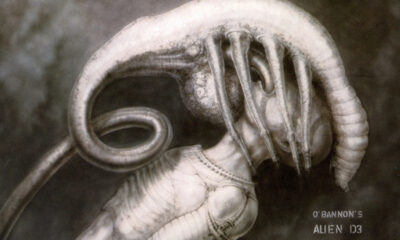
 Music & Art1 year ago
Music & Art1 year agoThe Nightmarish Concept Art of H.R. Giger for Alien
-

 Film1 year ago
Film1 year agoThe Shining: Who let Jack Torrance out of the Pantry?
-

 Music & Art1 year ago
Music & Art1 year agoThe Nightmarish Art of Zdzislaw Beksinski
-
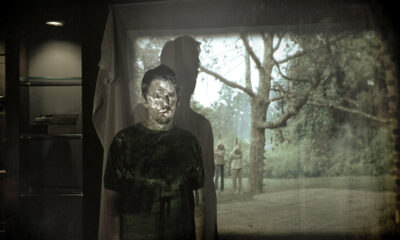
 Music & Art1 year ago
Music & Art1 year agoSinister: The Terrifying Other Soundtrack
-

 Reviews1 year ago
Reviews1 year agoScream 6 (2023) Review: Ghostface Takes Manhattan
-

 TV1 year ago
TV1 year agoZombie Variants Bring New Excitement to Daryl Dixon’s Walking Dead Spin-Off.
-
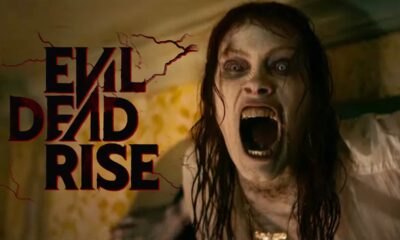
 Film1 year ago
Film1 year agoDeadites Move to LA in Evil Dead Rise




